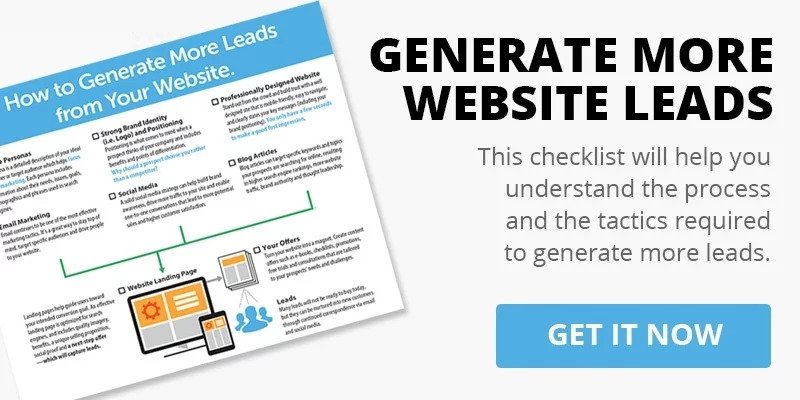One of the most effective tactics for generating more awareness and leads is LinkedIn. With over 500 million users, there’s tremendous potential to connect with new customers. Unfortunately many companies and individuals aren’t tapping the true power and potential of LinkedIn.
In the spirit of keeping things simple, here are five steps to start using LinkedIn more effectively:
- Identify your target personas
- Optimize your profile
- Demonstrate expertise
- Build trust
- Offer value
- Stay persistent
Identify Your Target Persona
A persona is a detailed snapshot of your ideal customer, and includes information about them including:
- Job title
- Industry
- Company size
- Roles
- What are their needs and issues?
- What challenges are they facing?
- What are they trying to accomplish?
- Where they go for information?
- What are their goals?
- How much time do they spend online?
- Where are they located?
- What motivates them?
- What search terms do they use?
A persona offers a wealth of information and a starting point to guide your content marketing. I advise clients to find and focus on a hundred prospects to start.
For more information about personas and how they fit into the lead generation process, check out How to Increase Awareness and Leads: Start with Personas and Positioning on our blog.
Optimize Your Profile
Turn your profile into a sales tool which positions you as a trusted expert to help solve your prospects’ needs and issues.
- Customize your header graphic
- Professional photo
- Job title should include a statement that describes how you benefit and help companies
- About Section: Your sales pitch (focus on persona needs/issues)
- Include call to actions
- Add testimonials
- Include media samples
- Write articles so they will appear on your profile
Demonstrate Expertise
Start with something simple like writing articles, whitepapers, or create a slideshare presentation. Another idea is to post case studies that show dramatic results your clients achieved using your products or services.
Your expertise also depends on first impressions, so make sure your profile is optimized. This includes:
- Including a professional photo
- Replace your job title with a brief statement describing how you help your clients.
- Write your summary around the following key points:
- How you can add value
- How you’re unique
- What insights you offer
- That you understand their issues
- Have a solution that can help solve a problem
Build Trust
Building trust starts with what I call purity of intent. Or to put it another way, a sincere desire to help others without expecting anything in return.
After you make a connection, you can build trust:
- By resisting the urge to start selling and simply thank them for connecting.
- By reviewing your connection’s profile page, LinkedIn groups, LinkedIn activity and their website to get a better understanding of their interests and needs.
- By sending them helpful information and resources that addresses their issues and needs.
- Be conversational
- Be concise
If you focus on helping and educating rather than selling, you’ll gain more trust which is one of the requirements to building a relationship.
Offer Value
When posting or messaging your contacts, you should offer valuable information and insights that address the issues your prospects are facing. Refer back to your personas’ issues and needs to focus your content.
Here are a few examples of content you can post or include in your messages to contacts:
- Checklists
- Research
- Industry insights
- Buying guides
- Troubleshooting guides
- Maintenance guides
- Articles
- eBooks
- Demonstration videos
- Free or discounted trial offers
Bringing it All Together—The Prospecting Process
Here’s an overview of our LinkedIn prospecting strategy that has produced thousands of new contacts, hundreds of new leads and dozens of new customers for our clients.
- Make sure you have LinkedIn Sales Navigator as it includes the search filters you’ll need. It also gives you the ability to save searches.
- Then start searching for your prospects by title, industry, company size, location, etc.
- If your search returns thousands of results, you can narrow the search or use a browser extension to auto search profiles. Again we recommend focusing on 100 prospects.
- Send your invitation to connect with a personal note.
- If your invitation to connect is accepted, send a quick thank you.
- Like and comment on their posts
- Then start your messaging sequence—Every week, send helpful articles and information that address their issues. I recommend sending articles and information not written by you to avoid self-promotion, and to build trust. After sending 2-3 messages, then send a link to your article or offer. Notice there’s no selling—just educating and helping.
- Repeat the sequence.
Stay Persistent
Researching, prospecting, and posting on LinkedIn can take a considerable amount of time, but stay patient. Remember only 2% and 3% of sales are made on the first and second contact respectively. 5% on the third, and 10% on the fourth contact. 80% of sales are made on the 5th to 12th contact.
Only 10% of sales people make more than three contacts which means they are only giving them a 5% chance of success.
Another thing to keep in mind: 30% of prospects will never buy from you, but 70% might.
I hope this has been helpful. If you have any questions, feel free to contact me. I’d be happy to walk you through the process and show you some of the tools and messaging sequences our clients use.

